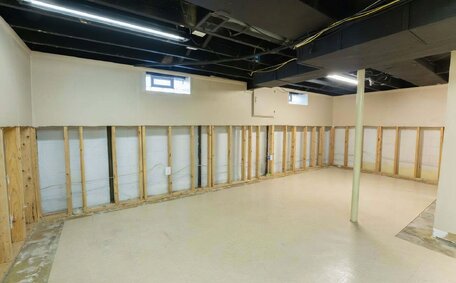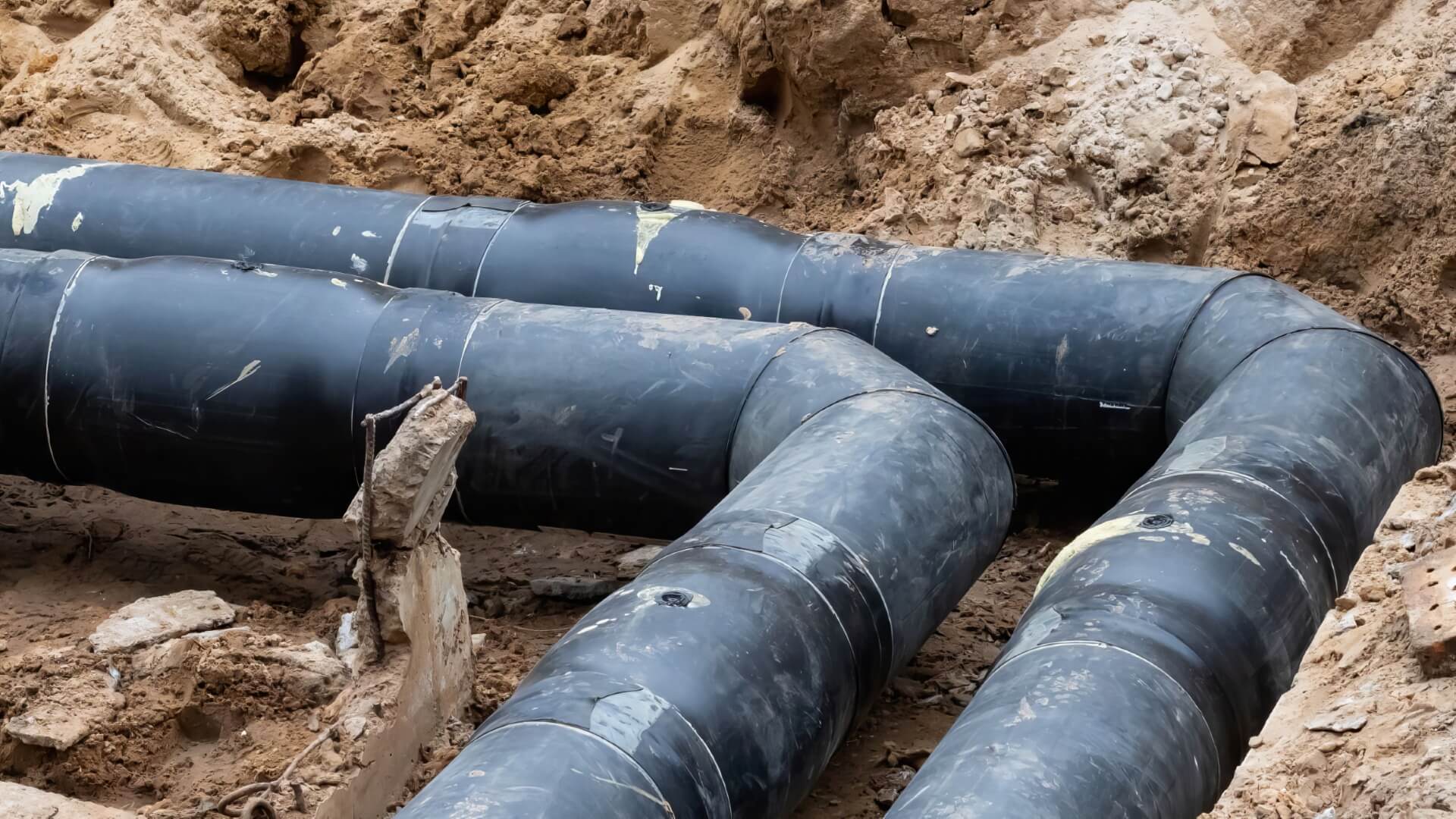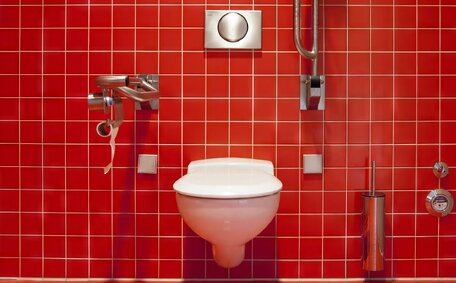Introduction to Gas Work Safety Gear
Working in the oil and gas industry entails numerous hazards, necessitating strict industrial safety practices and the use of appropriate safety gear for all professionals. Having the right protective equipment is critical, regardless if you are installing, servicing or engaging in general gas fitting tasks, as it can mean the difference between safety and serious injury.
In St Peters, Sydney, oil and gas workers understand the risks associated with volatile gases, underscoring the necessity for personal protective equipment (PPE) in daily operations.
Daily hazards including gas leaks, flash fires, explosive flammable liquids, and exposure to toxic fumes underscore the importance of comprehensive knowledge about PPE. This is why we promote safe work practices and consistently use certified oil and gas PPE that complies with Australian standards.
Protective clothing and PPE, tailored for the oil and gas sector, shield workers’ heads, faces, eyes, ears, lungs, hands, feet, and entire bodies. This gear offers full-body protection against impacts, chemical exposures, burns, hearing loss, and respiratory hazards. Tradespeople seeking more information will discover that common gear includes the use of personal protective equipment:
- Flame-resistant coveralls or treated cotton wear
- Leather protective gloves and safety footwear
- Protective safety goggles and face shield
- Hard hats
- Hearing protection like earplugs
- Self-contained breathing apparatus
To meet PPE requirements and maintain safety, all equipment must be properly maintained and stored post-use. Diligence in safety should never waiver, even without specific threats or on small jobs. Employers’ legal obligations and compliance with regulations such as SafeWork NSW are crucial for the safety of workplace professionals; thus, gas safety gear must meet industry standards.
The subsequent sections will enumerate the importance of selecting and using the right PPE for professionals in the oil and gas industry. We will examine how appropriate equipment can protect tradespeople from job site hazards and avert serious injuries in St Peters.
Importance of Proper PPE Selection and Usage
Choosing and correctly using appropriate gas PPE can protect industry professionals in St Peters from workplace hazards. Gas work carries major risk assessment considerations, including potential exposure to flammable and toxic gases, oxygen deficiency, and extreme heat from flash fires that can reach over 1000°C.
Ensuring all PPE that should be worn can protect against these gas-related hazards can help prevent severe injuries and even save lives. Essential PPE for gas-related work includes fire-resistant clothing, steel-toed boots, hard hats, safety goggles, and breathing apparatus. This specialised PPE should be used to shield from burns, impacts, chemical exposure and respiratory dangers.
Workers in the oil and gas sector should choose PPE that complies with AS/NZS standards and suits their specific tasks. For instance, steel-capped boots are essential for foot protection when managing heavy gas cylinders at height. And proper fire-retardant overalls are a must when doing hot work around gas lines where there’s a risk to hand, foot, and overall safety.
Also, ensure your workers are well-trained in using oil PPE equipment. All gear, including fall protection, must be correctly worn at all times, ensuring a proper fit for gas work activities. Not adhering to control measures can result in situations where accidents can undermine a safe working environment, even for small jobs, potentially leading to tragic consequences.
Adhering to health administration OSHA guidelines and selecting PPE tailored to your professionals’ tasks ensures safe working practices and the highest level of protection.
Head Protection: Hard Hats and Helmets
Wearing a hard hat provides essential protection, such as defending against traumatic head injuries when working in the gas industry. Traumatic head injuries can occur from falling objects, bumps, and contact with pipes or equipment. Hard hats and safety helmets provide all workers with essential protection against these hazards in the oil gas industries.
Gas industry-specific hard hats are engineered to protect the head and neck using rugged materials such as high-density polyethylene (HDPE) or advanced engineering resins. They offer a wide variety of features like broad brims and integration points to attach accessories such as face shields. Key features include electrical insulation, impact absorption and heat/flame resistance up to temperatures of 130°C.
Safety helmets help protect with lightweight headgear and integrate essential accessories like ear muffs, welding masks and breathing apparatus. Popular options are made of durable nylon/glass fibre composites with high visibility, high-temperature paint finishes.
All head protection gear should comply with Australian Standards AS/NZS 1801 and AS/NZS 1801.1. Check out and ensure proper selection, fit and usage are crucial for safety. Regular inspection and replacement of damaged hard hats is also essential.
By investing in industrial safety products like headgear and enforcing consistent use, gas companies in St Peters can effectively protect their professionals against dangerous but preventable head injuries on the job, ensuring your free concern of such risks.
Eye and Face Protection
Eye protection is crucial in the gas industry where pressurised gases pose a potential ignition hazard. Sudden gas releases and flash fires can cause serious eye damage, including injuries and burns. That’s why proper eye and face protection is essential PPE for professionals who work in the gas industry.
Safety glasses provide impact and splash protection from projectiles like particles, tools, and pressurised liquids. Look for indirect vented styles made of polycarbonate with anti-fog coatings. For handling cryogenic gases, specialised cold-resistant goggles to protect the face are required.
Face shields, which should be worn all the time over safety goggles, provide an added layer of protection for the entire face. Full face shields offer protection such as guarding against chemical splashes, intense heat and radiant energy. Smaller visors can attach to hard hats to shield the face.
All eye and face protection gear must adhere to AS/NZS 1337 and 1338 standards. Make sure to select the right type based on your professionals’ job duties and exposure risks. Proper use and maintenance are vital to prevent injuries and illnesses, ensuring optimal protection.
Hearing Protection
Protecting hearing is a critical concern for gas industry professionals in St Peters who are regularly exposed to hazardous noise levels. Prolonged exposure can lead to permanent and irreversible hearing loss over time.
There are two main types of hearing protection suitable for the gas industry:
- Earplugs made of foam, silicone, flanged, or custom-moulded materials that block sound from entering the ear canal.
- Earmuffs, often with integrated safety helmets, that cup over the entire ear to block exterior noise.
The Noise Reduction Rating (NRR) is a key consideration when selecting hearing protection. A higher NRR indicates greater sound dampening. An NRR of 20 to 30+ is recommended for very noisy gas work environments.
Proper insertion and constant use of hearing protection should always be maintained whenever exposed to hazardous noise. Noise dosimetry can help identify high risk gas tasks requiring mandatory hearing protection. With the right gear and strict enforcement of use, hearing loss can be prevented.
\ - Earplugs made of foam, silicone, flanged, or custom-moulded materials that block sound from entering the ear canal.
\ - Eo block exterior noise.
\
The Noise Reduction Rating (NRR) is a key consideration when selecting hearing protection.
Respiratory Protection
Respiratory protection, according to safety dathydrogen sulphide and methane in confined spaces.
Using the right kind of respirators is crucial.
Full facepiece respirators protect the eyes, face and lungs. Full facepiece respirators protect the eyes, face and lungs. Powered air purifying respirators (PAPRs) offer advanced protection with battery-powered flow.
For a respirator to function effectively, a proper fit is essential. Qualitative and quantitative fit testing work must ensure a tight seal so no unfiltered air is breathed in. Regular fit checks should become a strict safety protocol.
Exposure can range to just a few breaths of 500ppm hydrogen sulphide can be fatal. But trained professionals using well-fitted, industry-certified respirators can significantly reduce risk while working with this extreme respiratory hazard.
Ensuring adequate oxygen levels for workplace health safety are maintained is also critical. Multigas detection systems should be standard issue when dealing with potentially oxygen-deficient environments.
With the right respiratory protection and training, gas tradespeople can effectively minimise their exposure risks on the job.
Hand Protection: Gloves and Gauntlets
Protecting hands is a top priority when doing gas work that brings them into contact with hazardous chemicals, extreme temperatures, sharp tools and rough surfaces. Gloves can provide an essential barrier against skin exposures, including chemical exposure, cuts, burns, abrasions and impact injuries.
Profession-specific gloves must offer grip on palms and fingertips for secure handling of gas pipes and equipment. Look for cut-resistant gloves, such as those made of materials like high-performance polyethylene, aramid or knitted Kevlar®, that protect against blades and heavy impacts.
Chemical resistant disposable nitrile gloves guard against corrosive substances and solvents during gas fitting jobs. Thicker reusable options are made of neoprene, butyl rubber or permeation-resistant synthetic materials.
Thermal protection is also key for cryogenic exposure or hot work that risks burns. Insulated cryo gloves with silicone grips prevent freezing or blistering from liquefied gases. Leather and carbon fibre gloves shield hands from sparks, flames and high heat from molten metal when welding or cutting.
Proper usage – wearing work gloves whenever handling gas, tools, or chemicals – is just as important as making sure workers choose the right hand protection. Safety officers should also regularly inspect work gloves for wear and damage to ensure they continue providing effective protection.
Body Protection: Flame Retardant Clothing
Wearing flame-retardant (FR) clothing is crucial for body protection against flash fires and burns in gas work, as pressurised flammable gases can ignite suddenly, creating lethal flames and extreme heat.
FR garments such as coveralls, jackets, and pants are crafted from inherently fire-resistant fabrics like treated cotton, Nomex, Proban, and Kevlar. These fabrics self-extinguish when exposed to flames, resist ignition, and provide an added layer of protection underneath fire suits.
FR clothing should cover any exposed areas and be properly fitted to avoidloose openings that could allow flames to contact skin. Garments should meet AS/NZS standards for heat and flame resistance. As workwear wears from use, it loses protective abilities, so inspection and replacement is key.
For top protection, you should make sure FR workwear should be worn in combination with a fire suit, gloves, balaclava and other PPE when doing hot work with an arc flash or spark hazard. Mandating FR clothing ensures gas professionals are shielded from extreme burns and body injuries.
Wearing flame-retardant (FR) clothing is crucial for body protection against flash fires and burns in gas work, as pressurised flammable gases can ignite suddenly, creating lethal flames and extreme heat.
Foot and impact injuries if an object is dropped or rolled onto it.
Additional safety features to look for include slip-resistant soles for stability, puncture-resistant plates to prevent sharp object penetratroper sizing and laced fitting are also important to avoid trips and falls. Enforcing the use of steel-toe boots and promptly replacing any damaged ones helps ensure the safety of gas professionals’ feet at work.
Proper Care and Maintenance of PPE
Proper care and ppe training must also be crucial for safety health, ensuring it continues to provide adequate protection for gas industry professionals. PPE should be inspected before and after each use for signs of damage or wear and should be worn when these checks confirm it is safe to do so.
After any impact that could cause unseen damage, hard hats must be replaced. Gloves being used should be checked for holes, frays or tears and replaced as needed. Respirators must be regularly cleaned and filters changed as per the manufacturer’s instructions.
All PPE should be thoroughly cleaned after use according to its specific care instructions to eliminate contaminants. Use mild soap and warm water for items like respirators, goggles and visors. Check FR clothing for burn holes or tears and repair or replace if found.
It’s crucial to understand proper PPE storage when not in use, including safety measures to prevent damage. Keep hard hats, gloves, goggles and respirators in clean, dry locations away from tools, sunlight and chemicals. Hang up FR garments to prevent compression damage to fire-resistant fibres.
By following thorough cleaning routines and first aid and emergency response methods, workers can extend the usable life of their safety gear and ensure it continues providing the highest level of protection on the job.
Training Workers on PPE Usage
\
At St Peters Plumbing, we invest heavily in training our professionals on proper PPE selection, usage, and care. At St Peters Plumbing, we invest heavily in training our professionals on proper PPE selection, usage, and care. PPE can offer integral safeguards; workers are educated on inspection procedures, cleaning methods, storage practices, and learn replacement schedules to maximise PPE lifespan. Regular refresher training ensures your team is fully versed in what they need to know about equipment limitations and new PPE technologies. At St Peters Plumbing, we invest heavily in training our professionals on proper PPE selection, usage, and care.
All new employees undergo mandatory ppe training to learn how to correctly don, wear, and doff each type of protective gear.






